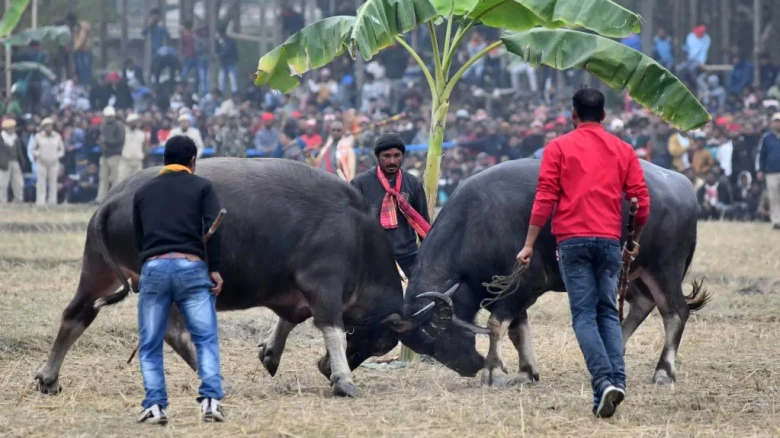Recent discoveries during an enumeration survey of water birds have unveiled two new mammalian species...
Digital Desk: In the verdant expanse of Assam's Kaziranga National Park, renowned for its iconic one-horned rhinoceroses and thriving ecosystem, wildlife enthusiasts have cause for celebration. Recent discoveries during an enumeration survey of water birds have unveiled two new mammalian species, augmenting the total count to 37 within this biodiverse haven.
The elusive binturong, also known as the bearcat (Arctictis binturong), and the diminutive small-clawed otter (Aonyx cinereus) have been officially identified within the park's boundaries.
The binturong, India's largest civet, is a nocturnal and arboreal creature known for its secretive nature and preference for treetops. Captured on camera by tour guide Chirantanu Saikia during the fifth migratory bird count, this species holds a coveted position under Schedule I of the Wildlife Protection Act of 1972, emphasizing the imperative for conservation efforts.
The small-clawed otter, the world's smallest otter species, made its debut following a training program for officers and frontline staff conducted by the Wildlife Institute of India in collaboration with the Assam Forest Department.
These otters, with partially webbed feet and short claws, exhibit remarkable hunting prowess in aquatic environments, feeding on fish, crustaceans, and mollusks. Living in tight-knit family groups, they communicate through an array of vocalizations, highlighting their sociable nature.
These discoveries not only enrich the diverse tapestry of life in Kaziranga but also underscore its pivotal role as a sanctuary for endangered species. Spanning across Golaghat, Nagaon, and Sonitpur districts, the park stands as a UNESCO World Heritage Site, celebrated for its Great Indian one-horned rhinoceros. Its landscape, characterized by dense forests, towering elephant grass, rugged reeds, marshes, and shallow pools, provides an ideal habitat for its inhabitants.
Kaziranga's fauna encompasses the famed Big Five—rhinoceroses, elephants, tigers, wild water buffaloes, and eastern swamp deer—alongside a plethora of other mammals including the Indian wild boar, gaur, hoolock gibbons, Gangetic dolphins, capped langurs, sloth bears, leopards, and jackals. The inclusion of the binturong and small-clawed otter in this roster is a testament to the park's enduring conservation success and its indispensable role in safeguarding India's natural legacy.




















